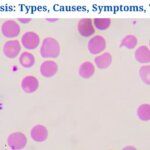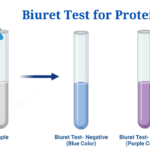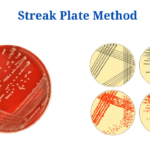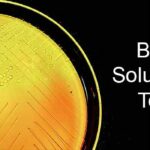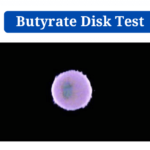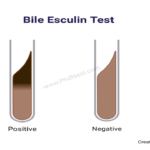What is Butyrate Disk Test ?
The capacity of Moraxella catarrhalis to use bromochloro-indolyl butyrate or 4-methylumbelliferyl butyrate is used in the butyrate disc test, which is a quick identification test for Moraxella catarrhalis.
- Otitis media, sinusitis, conjunctivitis, bronchitis, and pneumonia are all caused by Moraxella (Branhamella) catarrhalis.
- Furthermore, many M. catarrhalis strains develop the enzyme -lactamase, making them resistant to penicillin and ampicillin.
- Traditional tests can take up to 48 hours to complete, whereas butyrate disc tests, for example, are a quick and easy way to identify a substance.
- The hydrolysis of substrates such as bromochloro-indolyl butyrate or 4-methylumbelliferyl butyrate in the laboratory demonstrates the presence of butyrate esterase.
- The disc test or the tube test can both be used to accomplish the test. Both of these tests are rapid identification tests, however the disc test is more practical because it does not require reagent preparation like the tube test requires.
- The fluorescence produced by the hydrolysis products can be used to observe the hydrolysis of the substrate in the disc test.
Objectives of Butyrate Disk Test
- To discover and identify catarrhalis from clinical samples as a presumptive identification method.
- To discover the ability of an organism to hydrolyze butyrate substrate by the manufacturing of butyrate esterase.
Principle of Butyrate Disk Test
- The butyrate test is a quick qualitative test for detecting the enzyme butyrate esterase, which also serves as a presumptive M. catarrhalis identification technique.
- When combined with the organism’s characteristic appearance on blood agar plates, a typical Gram stain, and a positive oxidase test, the butyrate test can be used to definitively identify Moraxella catarrhalis.
- Substrates include bromochloro-indolyl butyrate and 4-methylumbelliferyl butyrate. Butyrate esterase hydrolyzes bromochloroindolyl substrate to release indoxyl, which when combined with oxygen makes indigo. Indigo is a chromogenic substance with a blue to blue-violet colour spectrum.
- Under UV light, the hydrolysis of 4-methylumbelliferyl substrate yields a luminous molecule.
- As a result, the hydrolysis is identified by a change in colour or fluorescence from the products.
Microorganism Tested
Gram-negative, oxidase-positive diplococci that develop as white colonies on Blood Agar Plates and stay together when lifted with a loop or wire.
Reagents and Supplies Used in Butyrate Disk Test
Reagent
Bromochloro-indolyl butyrate and 4-methylumbelliferyl impregnated discs
Supplies
- Bacteriologic loops or sterile wooden applicator sticks
- Petri dish, slide, or tube filled with distilled water
- UV radiation with a wavelength of 360 nanometers
Procedure of Butyrate Disk Test
- The discs are placed on a clean glass slide or petri dish after being taken from the vial.
- To moisten the disc, a drop of distilled or deionized water is added.
- A heavy, visible inoculum is collected using a sterile wooden applicator stick or a loop from a 24 to 72 hours culture and deposited on to the disc.
- The infected disc is incubated for up to 5 minutes at room temperature (15 to 30°C).
- To get false-positive findings, you might need to incubate for a little longer.
Quality Control
- If the discs do not appear white with no visible colour, they should be discarded.
- The organisms listed below can be utilised for positive and negative findings as a sort of quality control.
- catarrhalis ATCC – butyrate positive.
- Neisseria gonorrhoeae or Neisseria lactamica – butyrate negative.
Result Interpretation of Butyrate Disk Test
- Within 5 minutes, a positive test produces a blue to blue-violet hue (bromochloro-indolyl substrate) or fluorescence (4-methylumbelliferyl substrate), suggesting that butyrate esterase has hydrolyzed bromochloro-indolyl and 4-methylumbelliferyl, respectively.
- The absence of a colour shift indicates a negative test.
Reporting Results
- If an oxidase-positive, Gram-negative diplococcus fits the following criteria, the result is described as Moraxella catarrhalis.
- When grown on BAP, it forms colonies that stay intact when sampled.
- Is butyrate a good thing?
- The above-mentioned parameters for DNase production can be used to evaluate butyrate-negative colonies that are suggestive of M. catarrhalis. Moraxella catarrhalis colonies that are DNase positive are reported.
What is PhD : Meaning, How to Do, Benefits, Full Details
Uses of Butyrate Disk Test
- For the detection of M. catarrhalis, the Butyrate Disk Test is utilised as a quick presumptive identification test.
- The butyrate test is also used to assess an organism’s capacity to hydrolyze butyrate substrate via butyrate esterase’s enzymatic action.
- The test is also used as a biochemical test to distinguish between oxidase-positive, Gram-negative diplococci Neisseria gonorrhoeae (negative) and Moraxella catarrhalis (positive).
Limitations of Butyrate Disk Test
- To avoid false-positive results, the discs should not be incubated for more than 5 minutes.
- Other Moraxella species, as well as Eikenella and Acinetobacter, may produce a weakly positive or positive reaction.
- To be correctly recognised as M. catarrhalis, the organism must be an oxidase-positive, Gram-negative diplococcus with characteristic morphology.
- Staphylococci and Pseudomonads, for example, are unrelated species that can produce favourable results.
- False-negative tests could occur if the inoculum is too tiny. If the organism is suspected but the test is negative, try again with a larger inoculum or a DNase test.
Butyrate Disk Test Citations
- Biochemical Tests for the Identification of Aerobic Bacteria. (2016). Clinical Microbiology Procedures Handbook, 3.17.1.1–3.17.48.3. DOI:10.1128/9781555818814.ch3.17.1
- https://minimicro.weebly.com/day-7.html
- http://universe84a.com/butyrate-disk-test/
- https://www.sciencedirect.com/science/article/pii/0048969794900264
- https://www.researchgate.net/publication/15535342_Assessment_of_complement-mediated_killing_of_Moraxella_Branhamella_catarrhalis_isolates_by_a_simple_method
- https://www.chegg.com/homework-help/questions-and-answers/products-hydrolysis-substrate-starch-glycogen-substrate-enzyme-amylase-q16003613
- https://quizlet.com/306871200/spot-tests-flash-cards/
Related Posts
- Anisocytosis: Definition, Types, Causes, Symptoms, Treatment
- Endospore Staining: Principle, Procedure, Reagents, Results
- Flow Cytometry: Overview, Principle, Steps, Types, Uses
- Northern Blot: Overview, Principle, Procedure and Results
- MPV Blood Test: Calculation, High and Low MPV Value, Results
- Latex Agglutination Test: Objectives, Principle, Procedure, Results
- Iodine Test: Definition, Objective, Principle, Procedure, Results
- Eosin Methylene Blue (EMB) Agar
- Biuret Test for Protein: Purpose, Objectives, Principle, Procedure, Reagents
- Streak Plate Method: Meaning, Principle, Methods, Importance, Limitations
- Bile Solubility Test: Objective, Principle, Procedure, Results, Uses
- Butyrate Disk Test: Objective, Principle, Procedure, Results, Uses, Limitations
- Beta Lactamase Test: Objective, Principle, Procedure, Results, Limitations
- Bacitracin Susceptibility Test: Objective, Principle, Procedure, Results, Uses, Limitations
- Bile Esculin Test: Objective, Principle, Procedure, Result, Uses, Limitations



